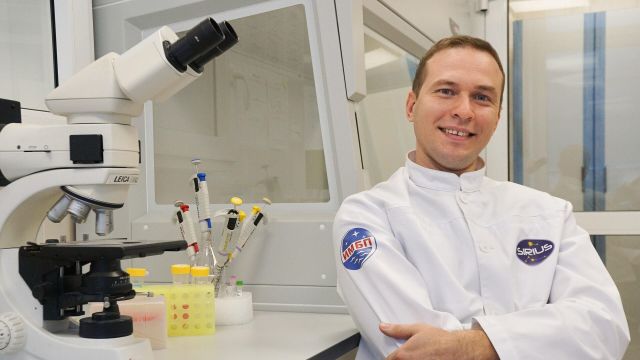In early February, the Institute of Biomedical Problems (IBMP) RAS announced the recruitment of the crew of the SIRIUS-23 isolation experiment. Its participants will spend 12 months in a confined space. The aim of the project is to study the biomedical and psychological problems that astronauts may have during a long mission outside the Earth. Sergey Ponomarev, Executive director and chairman of the organizing committee of the SIRIUS project, told RIA Novosti correspondent Pavel Zyuzin about the criteria for selecting candidates, what tasks the crew will face, and how the data obtained will be useful in future space flights.
– What activities does the experiment include? What will its participants be doing during the year?– The day of the tester in the experiment is scheduled by the hour, and sometimes by the minute.
We call such a schedule a cyclogram. The cyclogram consists of scientific methods, which we are currently forming into a scientific program of the experiment. There are also trigger points, important points, special events, for example, landing on the Moon, finding the optimal place for a future lunar station. In addition, the experiment tracks the behavior and reactions of crew members during emergency situations, which means we will also model them, but it's too early to reveal all the secrets.
– Does the experiment involve simulating a flight to the moon or to some conditional planet?– It's definitely the moon.
Now we are talking about the Moon as an intermediate stage of expansion to other planets, where new technologies of interplanetary flights will be worked out.
– How many "exits" to the surface of the Moon are planned?– Several exits are planned so that each of the crew members will come to the surface of the "Moon".
Exits will be carried out in twos. In the annual isolation, we wanted to see how the testers cope with the tasks when we form pairs, and then give them the opportunity to choose a partner to go out on their own. The maximum number of exits to the surface of the satellite is still being discussed.
– What equipment will be used during the experiment?– Currently, the formation of a scientific program is underway, which will be completed by the beginning of April.
It's too early to talk about equipment right now.
– Will the results of the experiments of 17, 120 and 240-day isolation under the SIRIUS program conducted earlier be used in annual isolation?– The experience of organizing medical and psychological monitoring of the crew, organizing the selection of testers, and forming duty teams will definitely be used.
– The experiment does not involve the simulation of weightlessness. Does this greatly affect the reliability of the data obtained during its implementation?– Depending on what kind of research to talk about.
If we talk about the musculoskeletal system, then, of course, the data will be seriously different, and if we talk about psychology, isolation is the optimal model for conducting this kind of research.
– How will the success of the experiment be evaluated?– The experiment can be called successful if more than 90% of the scientific program is completed according to the cyclogram.
– Are two more SIRIUS annual isolation experiments still in the plans?– Yes, we are planning to conduct several more experiments.
Unfortunately, despite the seemingly large number of such experiments, there are negligible statistics on testers. In addition, in each subsequent experiment, techniques are added that significantly expand the possibilities of obtaining new information about the processes of human adaptation to isolation factors.
– Is an experiment with insulation planned for an even longer period?"Not at the moment.
– The second expedition to the ISS is being extended unscheduled. Will the IMBP scientists take advantage of this in terms of additional experiments?– Absolutely.
Each extension of the expedition is invaluable data that is carefully processed and analyzed in the interests of the development of space biology and medicine.
– Another well-known isolation experiment "Mars-500" was criticized by human rights activists for the homogeneous gender composition of the team, since only men took part in it. The IMBP RAS then replied that the girls had not passed the tests. What gender composition of the team is planned in SIRIUS-23?– In the group of experiments of the SIRIUS project, flights of gender-mixed crews are simulated.
We consider this direction to be modern and very promising, therefore, we invite both men and women to annual isolation, since the SIRIUS project is working out technologies in the interests of ensuring interplanetary flights, to which, from our point of view, an international gender-mixed crew should go.
– Will the selection criteria for men and women be different this time?– The selection criteria for men and women are the same as in previous experiments.
– Can the participant withdraw from the experiment? If so, under what conditions?– Each participant has the right to terminate their participation in the experiment at any time without explanation.
However, it is no longer possible to change your mind and then return to the "ship" again.
– One of the mandatory criteria for the selection of candidates is the availability of higher education. Is only technical necessary? Do the humanities have no chance?– We are guided by the international standards of selection for the cosmonaut squad.
Now there is a really strong tendency to give preference to candidates with technical education, but also natural science and medical. Each crew has its own doctor. I believe that in the future there will be chances for people with humanitarian education who have undergone additional technical and medical training.
– At what stage is the selection of applicants now? How many applications have already been received?– Currently, the formation of candidates for the crew is underway.
Data on this issue will be available closer to the summer.

